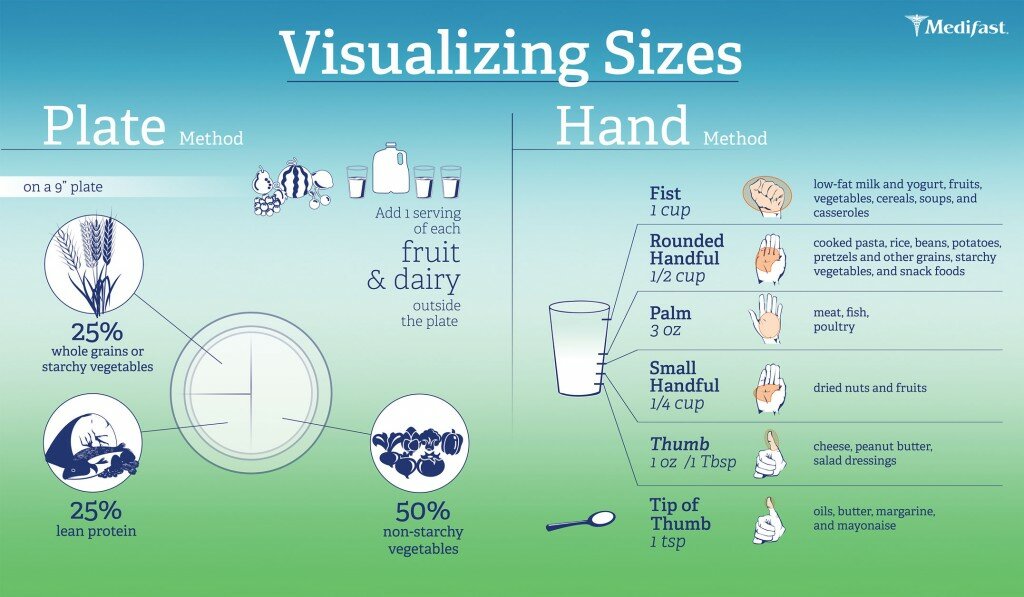One of the secrets to successfully managing our weight is being mindful of how much we are eating. Many of us know what we should be eating; it’s just the how much that gets us.
All foods can fit into a healthy lifestyle. The problem often lies in the amounts of food we eat on a regular basis. Having a point of reference for what a healthy portion looks like can help us manage our weight while enjoying the foods we love. There are two techniques that I have found to be extremely helpful with staying aware and mindful of how much I am eating.
Technique #1: The Hand Method
Using your hand to visualize a portion size couldn’t get much easier, because it’s with you wherever you go! As the info-graphic illustrates, your hand can help you estimate cups, teaspoons, tablespoons, and ounces for various types of foods.
Of course, hand sizes will vary. Try comparing your fist size to an actual measuring cup for a point of reference and remember, this is simply a quick tool to help you estimate.
The Hand Method helps guide us toward what a healthy serving size should look like. The question remains, however, what is a healthy serving size when it comes to the different food groups? Here are some general guidelines:
Technique # 2: The Plate Method
Another quick and easy way to visualize your portions is with the Plate Method. It all starts with a 9-inch plate and a few imaginary lines. Start by dividing the plate in half. Fill one half with non-starchy vegetables. Divide the other half of the plate into two quarters. Fill one quarter with lean protein and the other quarter with a starchy food such as whole grains or a starchy vegetable.
A serving of fruit (1/2 cup or 1 small piece of fruit) and low-fat dairy [1 cup (8 oz.) of milk or 2/3 cup (6 oz.) yogurt] go “outside of the plate” but are an equally important part of this well-balanced meal. And don’t forget water! Drink plenty of water with your meals, and in-between, to keep you hydrated.
The take home message? Enjoy your food, just eat less. Balance your meals with a variety of foods from all the food groups and utilize the Hand and Plate Methods to help you be mindful of how much you are eating.



October 10, 2013 at 1:20 am
I am very allergic to anything with egg in it. Will Medifast still work for me?
October 10, 2013 at 4:12 pm
Hi Craig, Yes! You can certainly do the Medifast program. You simply need to follow this allergen guide as to which products are egg-free.